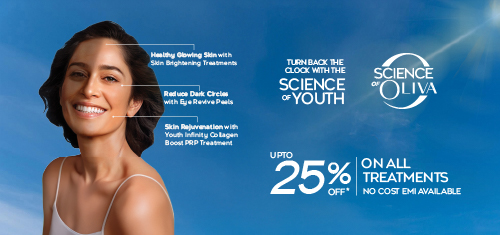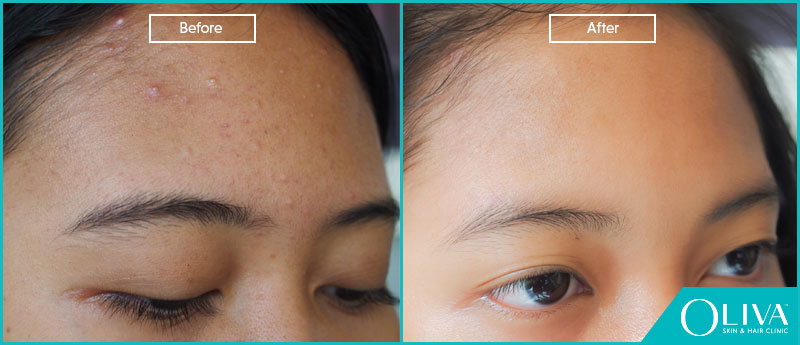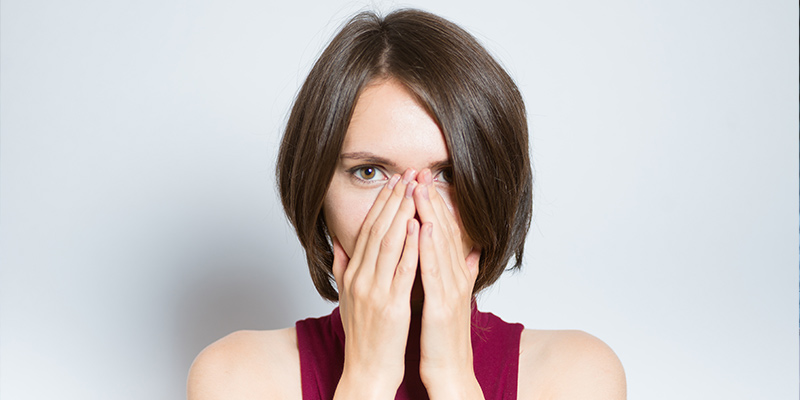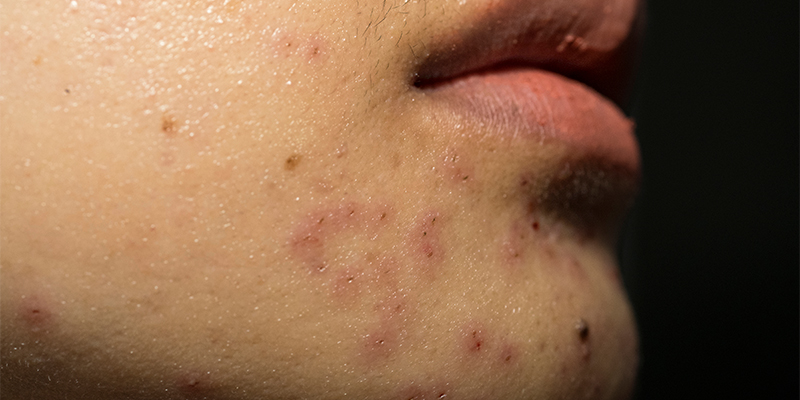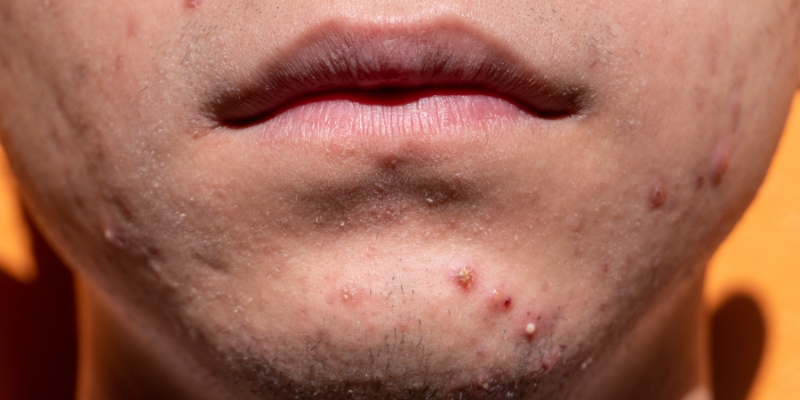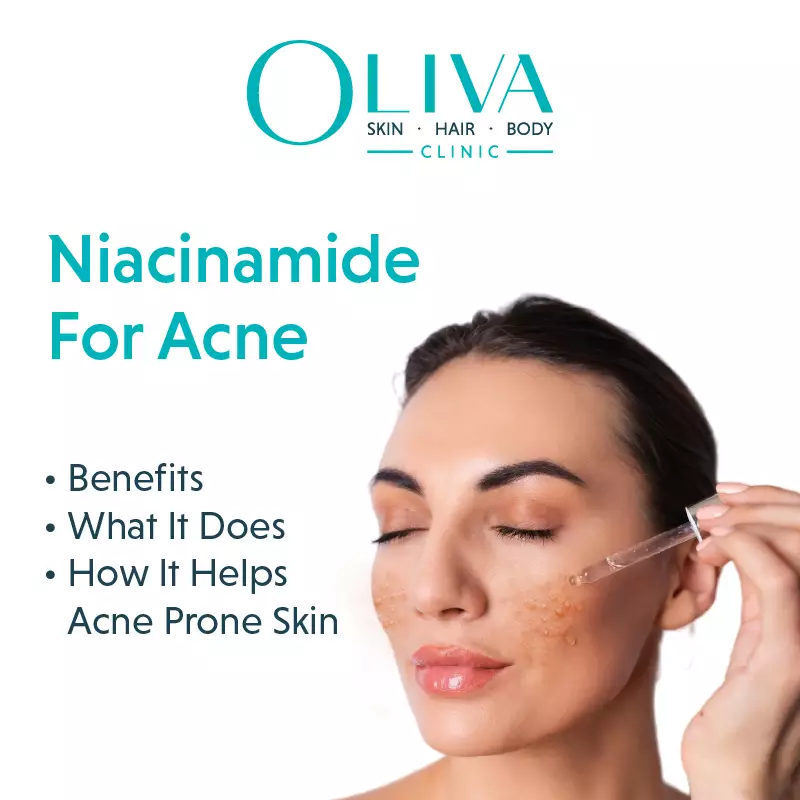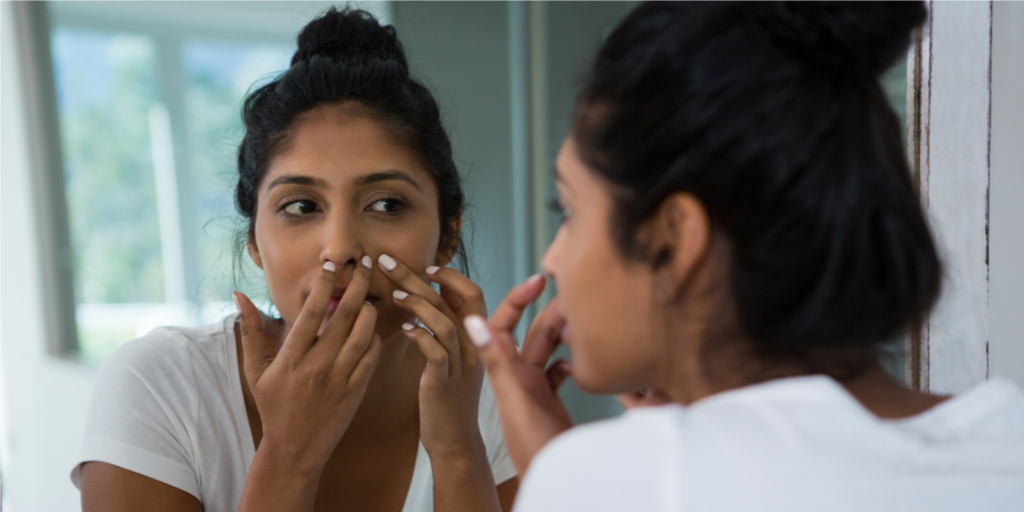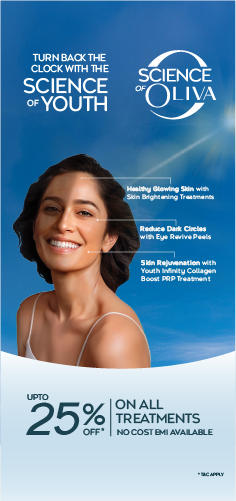In This Article
Forehead Acne (Pimple): Causes, Treatments, Prevention, And Results
Pimples are a common occurrence and can appear on any body part. However, certain areas, like the forehead, are more prone to acne. All your efforts to get rid of them may seem pointless and leave you vexed. But you need not worry as we look at the different causes, prevention tips and treatments of forehead pimples in this article to help you make an informed choice.
In This Article
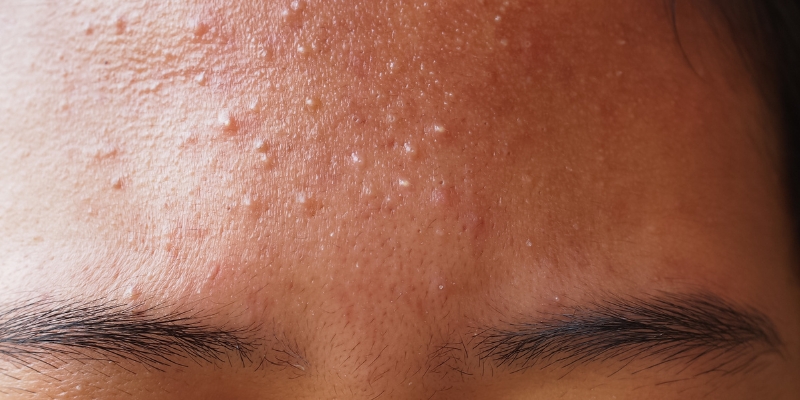
What Are Forehead Pimples?
Forehead pimples often appear as solid, red bumps known as papules and pus-filled bumps known as pustules. They occur when excess sebum production mixed with dirt and other build-up blocks the skin’s pores. Though forehead acne primarily affects adolescents, it can also appear among some in their adult years. [1]
NOTE:
Getting timely and appropriate treatment for your forehead acne is crucial as it prevents it from worsening, which can also include scarring.
Reasons For Pimples On Forehead
Several reasons can trigger excess sebum production in your body resulting in acne. In this section, we will look at the different causes. It is essential to identify the right cause to get suitable, long-lasting results.
The most common causes of forehead pimples include:
- Oily Skin: Different individuals have unique skin types and those with oily skin are more prone to forehead acne. The T-zone (the forehead, nose and chin areas) has more sebaceous glands, thus, more susceptible to pimples.
- Genes And Hormones: A positive family history of acne makes your skin more prone to the condition [2].hormonal changes in your body – puberty, menstrual cycle, pregnancy, certain medications that trigger your hormones, like oral contraceptives – can cause acne.
- Poor Hygiene: Not cleansing your face regularly can lead to a build-up of dirt, oil and other deposits clogging your pores, causing acne. Touching your pimples or popping them can spread bacteria and aggravate acne. Further, dandruff and an oily scalp can also lead to forehead pimples.
- Over-Exfoliating: Cleansing is important, but it is also necessary not to over do it. Cleansing too many times and over-exfoliating cause skin irritation. It can also strip your skin of its natural oils and barrier. Maintaining a balanced skincare routine with suitable products is important.
- Inappropriate Skin Care And Makeup Products: Using skincare and makeup products that suit your skin type and needs is essential. Using comedogenic products can block your skin pores, irritate your skin, and cause pimples. A lesser-known fact is that certain hair products can cause pimples if they come in contact with your forehead.
- Stress: A stressful lifestyle can disrupt your hormonal balance, disturbing your skin’s oil production, causing acne.
Conditions That Cause Forehead Acne
- Boils: Staphylococcal bacteria enter the body through scrapes and cuts in the skin or can travel down to the skin through infected hair follicles and cause boils. It starts as a skin infection in the hair follicle or oil gland and turns into a lump. Eventually, this lump develops into a pus-filled, painful boil under the skin.
- Ringworm: Ringworm is the appearance of a rash on the skin, usually round or oval shaped and has a raised border. Forehead ringworm is categorised as facial ringworm (tinea faciei). Scalp ringworm is also quite common, and in most of cases, the infection starts on the scalp and then extends to the forehead.
- Rosacea: Rosacea is a common disorder – mainly affecting the facial skin – that causes redness on the nose, chin, cheeks, and forehead. The common symptoms of this condition are flushing, persistent redness, bumps, and pimples.
- Cellulitis: Cellulitis is a common skin infection often caused by Streptococcus or Staphylococcus around small cuts and cracks in the skin, typically resulting in redness and swelling of the skin. If left untreated, cellulitis can develop into pockets of pus and spread through the bloodstream, causing blisters or pus-filled bumps.
- Contact Dermatitis: Contact dermatitis is a common condition that is a reaction of the skin when it comes in contact with an irritant or allergen. For instance, if your skin is sensitive to detergents, you can get affected by contact dermatitis when doing the dishes.
- Folliculitis: Folliculitis is an infection in the hair follicles, which causes inflammation. These are usually identified as tiny red bumps or dots of pus surrounding a hair. Depending on how worse the condition is, one to hundreds of follicles can be affected.
Must Read: How To Remove Pimples From Face?
Forehead Acne Treatments
Now that we know the common causes of forehead pimples, let us look at available treatment options to get rid of forehead acne. Note that forehead acne treatment depends on the underlying cause and the severity of your pimples. A holistic treatment plan is necessary for long-lasting results.
We recommend that you consult an expert dermatologist who can assess your skin and the grade of your forehead acne and give you suitable treatment.
The following are the treatment options for forehead acne:
- Chemical Peel Treatment: This advanced treatment effectively treats mild to moderate acne. Expert dermatologists customise specially-formulated chemical peels after analysing your skin type and the severity of your acne. These plant-based extracts exfoliate your skin to get rid of the dirt, dead cells and excess sebum build-up in your pores, leaving you with clear skin.
Watch this video, where Oliva’s dermatologist explains the process of chemical peel treatment, for a much better understanding:
- Antibiotics: If your forehead acne is severe, then your dermatologists may prescribe antibiotics such as erythromycin, or minocycline. [3] They usually combine this prescription with a topical cream such as vitamin A or retinoid creams, as antibiotics do not remove the clogged sebum in pores for the best results.
- Benzoyl Peroxide Formulation: Benzoyl peroxide [4] is the most commonly prescribed cream to treat acne. Its formulation helps prevent blocked pores and target bacteria that cause acne. Therefore, it not only helps fight existing acne but can prevent breakouts before they occur.
- Retinoids: Retinoid based creams [5] help in unclogging and cleaning the pores. This allows other medicated creams to penetrate through the skin and work better. Retinoid creams reduce outbreaks by preventing dead cells from clogging the pores of the skin. However, note that they can cause redness and aggravate your acne initially, but only temporarily.
- Combined Oral Contraceptives: Some oral contraceptives have anti-androgen properties And, as androgens are responsible for the oil production in your skin, the contraceptive pills can control this production. Hence, these pills are helpful in treating acne.
- Anti-Androgen Agent: Spironolactone, Cyproterone Acetate [6], and Flutamide are some anti-androgens that help reduce the appearance of acne and blemishes by blocking androgen hormone receptors in the body. Therefore, these slow down the process of production of excess oil by the sebaceous glands.
How Much Does Forehead Acne Treatment Cost In India?
The cost of forehead acne treatment in India ranges between INR 2,500 to INR 4,000 approximately per session. However, the cost varies for every individual and depends on several factors – skin type, the spread and severity of acne, the underlying cause, and the combination of treatments, including the number of sessions.
Before And After Results
Look at the results of Oliva’s clients who got customised forehead acne treatment from our expert dermatologists.
Must Read:List Of Best Prescription Acne Medications For Adults
How To Prevent Forehead Acne?
While there are effective treatments for forehead acne, taking certain measures can help prevent forehead acne.
Here are some ways to do it:
- Wash your face with a gentle cleanser twice a day, as it helps remove excess oil and keep your skin clean. Invest in a moisturiser that suits your skin type and needs, and a sun protection.
- Exfoliate your skin at regular intervals as it helps keep your pores clean and get rid of dead cells.
- Keep your scalp clean and free of dandruff. We recommend you consult a dermatologist to get a shampoo, preferably containing ketoconazole and zinc pyrithione, [7] effective in keeping your dandruff in control.
- Make sure you remove your makeup before sleeping, as it can clog your pores and cause pimples.
- Change pillow covers and bedsheets to fresh ones at regular intervals, as they can spread bacteria. Avoid wearing headbands or hats that come in contact with your forehead.
- Drink enough water, eat nutritious food and engage in moderate physical activity at least 4 times a week for overall improvement in your health.
Takeaway
We trust that you now have a clear understanding of all aspects related to forehead acne. If you are concerned about it, we recommend you consult a dermatologist who can ascertain the root cause of your forehead pimples and customise a treatment plan. Combining this with a suitable skincare routine ensures long-lasting results, while improving your skin health.
Frequently Asked Questions On Forehead Acne (Pimples)
You can effectively manage forehead acne with the right diagnosis and suitable treatment. Consult an experienced dermatologist who can identify the root cause for the best and long-lasting results.
Overconsumption of foods with high glycaemic index [8] can trigger or aggravate forehead acne like dairy products, greasy junk food, potato chips, fries, sugary drinks, etc.
Fluctuating hormones can be the cause of your forehead acne, but only an experienced dermatologist can confirm it. If you notice pimples on your forehead, book an appointment now!

